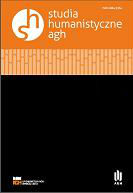ICELAND IN LIVING PICTURES: A MEETING-PLACE OF CINEMA AND NATION
ICELAND IN LIVING PICTURES: A MEETING-PLACE OF CINEMA AND NATION
Author(s): Björn NorðfjörðSubject(s): Cultural Essay, Political Essay, Societal Essay
Published by: Wydawnictwa AGH
Keywords: Icelandic cinema; world cinema; national cinema; Loftur Guðmundsson; Óskar Gíslason; Erik Balling
Summary/Abstract: Icelandic cinema has received considerable international attention in recent years. Numerous fi lms have garnered awards at fi lm festivals and subsequently been distributed far and wide – even critics and scholars have begun to take notice. This article approaches an altogether different Icelandic cinema. One that not only dates much further back in time, but also one whose ambitions were inherently national and devoid of global aspirations–although an important exception is discussed in the essay as well. Divided into two parts; the former addresses fi lms of documentary nature, tracing a thread from the oldest extant fi lm to so-called “Iceland-fi lms”, which developed during the interwar era into the fi rst local fi lms directed at foreign audiences, while the latter follows the trajectory of narrative fi lms leading up to the instigation of the Icelandic Film Fund in 1978 (heralding Icelandic cinema’s modern phase), but conversely expressed at no point any interest in foreign appreciations. Remarkably, the key fi gures of both documentary fi lmmaking and that of narrative feature fi lmmaking were the same: Loftur Guðmundsson and Óskar Gíslason. The essay addresses their authorship in terms of both subject matters and fi lm style during a period extending from 1923 to 1954. These were times of dramatic upheaval in Iceland (as obviously most anywhere else) that included the instigation of the Republic in 1944, modernization and urbanization, and the essay offers ample evidence on how these infl uenced the fi lmmaking of the era. Theoretically, the essay draws upon the works of Walter Benjamin and Siegfried Kracauer amongst others in drawing out the fi lm medium’s specifi city – not least its affi nities with the past. In this, it also offers some ideas on the nature of cinema with a broad applicability despite dealing specifi cally with a little known period of a little known national cinema.
Journal: Studia Humanistyczne AGH
- Issue Year: 10/2011
- Issue No: 1
- Page Range: 169-183
- Page Count: 15
- Language: English

